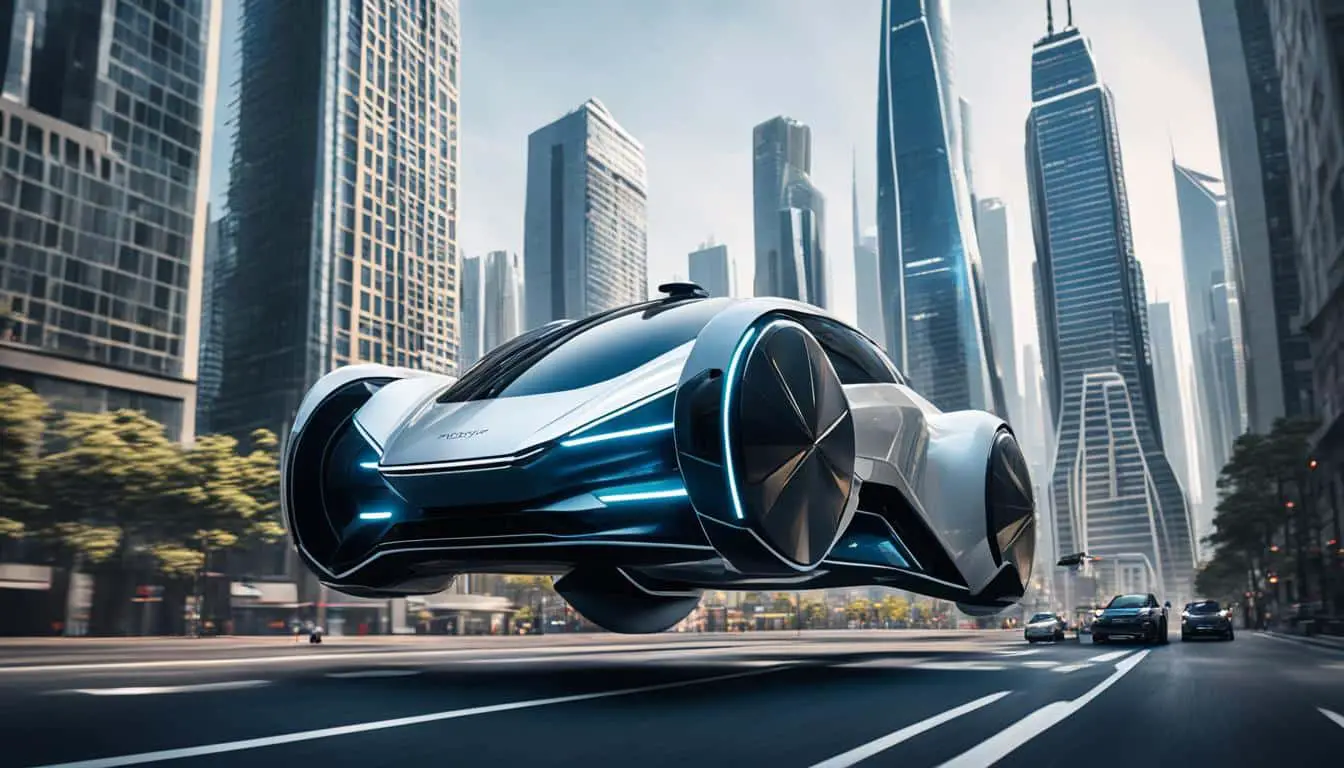
Predicting the Automotive Industry’s Future: Trends and Changes
The future of the automotive industry holds significant changes and trends that will shape the way we live, work, and travel. As technology continues to advance at an unprecedented rate, we can expect a multitude of innovations that will transform the automotive landscape.
One of the key predictions for the automotive industry is the widespread adoption of electric vehicles (EVs). With environmental concerns and government regulations driving the shift towards sustainability, major automakers such as Tesla, BMW, and Nissan are investing heavily in EV technology. As battery technology continues to improve, we can expect longer driving ranges and shorter charging times, making EVs a more viable option for consumers.
Another trend that will revolutionize the industry is autonomous vehicles. Companies like Waymo, Uber, and General Motors are making significant strides in developing self-driving cars. These vehicles have the potential to improve road safety, reduce traffic congestion, and provide increased mobility for individuals with disabilities or limited access to transportation.
The rise of the sharing economy has also impacted the automotive industry, with ride-hailing services like Uber and Lyft gaining popularity. As more people opt for shared mobility options, car ownership may decline, leading to a shift towards mobility-as-a-service (MaaS) platforms and car subscription services.
Additionally, connectivity features and advanced driver assistance systems (ADAS) are becoming standard in modern vehicles. With the integration of artificial intelligence (AI) and the Internet of Things (IoT), cars are becoming smarter and more connected, providing enhanced safety, convenience, and entertainment options.
Key Takeaways:
- The automotive industry is experiencing significant changes and trends that will shape the future.
- Electric vehicles (EVs) are gaining traction and will continue to grow in popularity.
- Autonomous vehicles have the potential to transform transportation and improve road safety.
- The sharing economy and mobility-as-a-service (MaaS) platforms are reshaping the automotive landscape.
- Connectivity features and advanced driver assistance systems (ADAS) are becoming standard in modern vehicles.
Evolution of Smartphones: Redefining Mobile Experiences
The smartphone industry is on the verge of a transformation, with several advancements set to redefine the way we experience mobile technology. From foldable phones to 5G integration, under-display cameras to AI photography, smartphones are evolving at a rapid pace to offer enhanced features and improved user experiences.
One of the most exciting developments in the smartphone market is the introduction of foldable phones. Leading companies like Samsung and Huawei have been refining this technology, allowing users to enjoy larger screens without sacrificing portability. These foldable smartphones offer the convenience of a compact device while providing the immersive experience of a tablet.
Another noteworthy innovation is the integration of 5G networks into smartphones. With 5G, users will experience lightning-fast download speeds and seamless connectivity, enabling them to stream high-quality content, play online games, and engage in video calls without any lag or interruptions. This technological leap is expected to revolutionize the way we use our smartphones, opening up new possibilities and significantly enhancing our mobile experiences.
Under-display cameras are yet another breakthrough in smartphone technology. By placing the front-facing camera beneath the screen, manufacturers can achieve a truly bezel-less display, providing users with an uninterrupted viewing experience. This innovation eliminates the need for notches or punch-hole cameras, resulting in a sleek and immersive screen design.
AI-powered photography is also making waves in the smartphone industry. With advancements in artificial intelligence, smartphone cameras can now intelligently analyze scenes and make real-time adjustments to capture stunning photos. Whether it’s optimizing exposure, enhancing colors, or applying portrait effects, AI photography features empower users to take professional-looking pictures with just a tap.
With foldable phones, 5G integration, under-display cameras, and AI photography, smartphones are reinventing the way we interact with technology and improving the quality of our mobile experiences.
As the competition in the smartphone market intensifies, manufacturers are pushing the boundaries of innovation to deliver devices that cater to the evolving needs and preferences of consumers. These advancements in smartphones promise to reshape the landscape of mobile technology, offering users a more immersive, efficient, and enjoyable smartphone experience than ever before.
The Future of Smartphones: A Snapshot
| Advancements | Highlights |
|---|---|
| Foldable Phones | Larger screens with enhanced durability |
| 5G Integration | Faster download speeds and superior connectivity |
| Under-Display Cameras | Uninterrupted screen experiences |
| AI Photography | Enhanced camera features and capabilities |
Immersive Experiences with VR and AR
Virtual reality (VR) and augmented reality (AR) technologies have steadily advanced, creating immersive experiences across various industries. These technologies offer the opportunity to blur the line between the physical and digital worlds, transforming how we learn, work, and entertain ourselves.
The next generation of VR headsets, such as those produced by Oculus, HTC, and Sony, are expected to feature higher resolution displays and enhanced tracking capabilities. This means users can expect more realistic and vivid virtual environments, enabling an even greater sense of immersion.
On the other hand, AR smart glasses are generating excitement among tech enthusiasts. Industry giants like Apple and Microsoft are rumored to be working on AR glasses that overlay digital information onto the real world. Such advancements will open up new possibilities, allowing users to seamlessly interact with virtual elements in their everyday lives.
The convergence of VR and AR, referred to as mixed reality, is poised to revolutionize industries such as education, architecture, and entertainment. For example, students can learn complex subjects through interactive virtual simulations, architects can virtually walk through their designs before construction begins, and entertainment experiences can become even more captivating with virtual characters and environments seamlessly integrated into the real world.
As VR and AR continue to evolve, the opportunities for businesses and individuals are vast. From training simulations and customer experiences to medical applications and virtual tourism, the immersive nature of these technologies creates exciting new possibilities.
Revolutionizing Homes with Automation
The future of home automation is set to transform our living spaces into smarter and more connected environments. With advancements in technology, homes will become more efficient, secure, and convenient. From voice assistants to smart security systems and connected appliances, automation will revolutionize the way we live. In this section, we will delve into the exciting developments that await us.
Voice Assistants: Enhancing Everyday Living
Voice assistants like Amazon Echo and Google Home are paving the way for a more intuitive and seamless interaction with our homes. These intelligent devices leverage natural language processing to understand and respond to our commands, making tasks such as controlling lights, playing music, and adjusting thermostats effortless. The future of voice assistants promises even greater improvements, offering enhanced voice recognition and a broader range of capabilities.
Smart Security: A New Era of Home Safety
The integration of artificial intelligence (AI) into home security systems is transforming the way we protect our homes. With AI-powered cameras and facial recognition technology, these systems can detect and identify potential threats, ensuring enhanced security and peace of mind. From real-time notifications on our smartphones to intelligent monitoring, smart security systems are revolutionizing home safety.
Connected Appliances: Convenience and Efficiency
The future of connected appliances is all about convenience and efficiency. From refrigerators that can create shopping lists and order groceries to washing machines that can be controlled remotely, these appliances are becoming more sophisticated and intuitive. With seamless integration into smart home ecosystems, these appliances can enhance our daily routines, making our lives easier and more productive.
Energy Efficiency: A Sustainable Future
As concerns about energy conservation grow, the future of home automation will prioritize energy efficiency. Smart thermostats and lighting systems will optimize energy consumption by adjusting settings based on occupancy and natural light levels. This not only reduces energy waste but also leads to significant cost savings. By embracing automation, homeowners can contribute to a sustainable future while enjoying the benefits of an energy-efficient home.

In the next section, we will explore the transformative impact of wearable technology on health and fitness.
Transforming Health and Fitness with Wearable Tech
Wearable technology is set to revolutionize the health and fitness industry, providing individuals with unprecedented access to their personal health data. These innovative devices have the potential to transform how we monitor our well-being, making it easier than ever to achieve our fitness goals and maintain a healthy lifestyle.
One of the key advantages of wearable tech is its ability to accurately track important health metrics. With advancements in sensor technology, wearables can now monitor vital signs such as heart rate, blood pressure, and sleep patterns with greater precision. This allows users to gain valuable insights into their overall health, enabling them to make informed decisions about their well-being.

Furthermore, wearable electrocardiogram (ECG) monitors have emerged as an invaluable tool in early detection of heart-related issues. These compact and portable devices can provide real-time data on heart rhythm and detect irregularities that may indicate potential cardiac concerns. By continuously monitoring heart activity, individuals can seek timely medical intervention, potentially preventing serious cardiovascular incidents.
In addition to traditional wearables, the advent of smart clothing embedded with sensors further enhances health monitoring capabilities. These garments seamlessly integrate technology into our everyday wardrobe, providing continuous vital sign measurements and activity tracking. Smart clothing offers new levels of comfort and convenience, making health monitoring effortless and accessible for everyone.
To complement wearables and smart clothing, augmented reality (AR) glasses designed specifically for fitness enthusiasts are gaining popularity. These high-tech glasses provide real-time performance data and training guidance, helping individuals optimize their workouts and reach their fitness goals. AR glasses can project virtual overlays onto the environment, enhancing the overall fitness experience and providing users with valuable feedback on their form and technique.
The Future of Wearable Tech in Health and Fitness
The future of wearable tech in the health and fitness industry is promising, with continuous advancements aimed at improving user experience and health outcomes. As technology evolves, wearables will become even more accurate, offering more sophisticated health monitoring capabilities. The integration of artificial intelligence (AI) algorithms will enable wearables to provide personalized insights and recommendations tailored to an individual’s unique needs and goals.
Moreover, wearable tech will likely continue to expand beyond fitness tracking to encompass preventive healthcare and chronic disease management. These devices will actively contribute to a proactive approach to healthcare, empowering individuals to take control of their well-being and make better lifestyle choices.
| Benefits of Wearable Tech in Health and Fitness | Examples |
|---|---|
| Accurate health monitoring | Fitbit, Garmin, Apple Watch |
| Early detection of heart-related issues | Withings Move ECG, Apple Watch Series 6 |
| Convenience and comfort | HEALTHYROAD, Athos, Hexoskin |
| Real-time performance data and training guidance | Bose Frames Tempo, FORM Swim Goggles |
As the adoption of wearable tech grows and the industry continues to innovate, we can expect to see more seamless integration of these devices into our daily lives. From monitoring our sleep patterns to providing personalized fitness recommendations, wearable tech will undoubtedly contribute to a healthier and more active future.
Conclusion: Embracing the Unpredictable Future
As we navigate the exciting landscape of tech gadgets in 2024, the future remains unpredictable yet filled with endless possibilities. The rapid pace of technological evolution continues to astound, offering innovative solutions and transforming various industries.
Embracing the future means being open to new technologies and staying curious about the optimal possibilities they bring. It means embracing the unknown and being willing to adapt to the unpredictable nature of technology.
With each new wave of innovation, we have the opportunity to shape the future in ways we never thought possible. By embracing the future and its unpredictable technology, we can optimize the possibilities that lie ahead and create a better world for ourselves and future generations.
FAQ
What are the future predictions for the automotive industry?
The future of the automotive industry holds significant changes and trends that will shape the way we live, work, and travel.
How are smartphones redefining mobile experiences?
Companies like Samsung and Huawei are refining foldable smartphones, offering larger screens with enhanced durability. Moreover, the integration of 5G networks will enable faster download speeds and superior connectivity. Under-display cameras will provide users with uninterrupted screen experiences, while AI-powered photography features will enhance smartphone cameras.
How are VR and AR technologies evolving?
Next-gen VR headsets from Oculus, HTC, and Sony will feature higher resolution displays and enhanced tracking. Companies like Apple and Microsoft are rumored to release AR smart glasses overlaying digital information onto the real world. The convergence of VR and AR, known as mixed reality, will open up new applications in education, architecture, and entertainment.
What advancements can we expect in home automation?
Voice assistants like Amazon Echo and Google Home will offer improved natural language processing. Enhanced home security systems will feature AI-powered cameras and facial recognition. Connected appliances, from refrigerators to washing machines, will become more sophisticated, offering convenience and efficiency. Smart thermostats and lighting systems will advance energy efficiency, reducing consumption and saving money.
How does wearable tech transform health and fitness?
Wearables will become more accurate in tracking health metrics like heart rate, blood pressure, and sleep patterns. Wearable ECG monitors will enable early detection of heart-related issues. Smart clothing embedded with sensors will offer new levels of comfort and health monitoring. AR glasses designed for fitness enthusiasts will provide real-time performance data and training guidance.
How can we embrace the unpredictable future?
Embracing the future means being open to new technologies, staying curious, and understanding the potential they hold for a better world. Let’s embrace the opportunities and shape the future together.
Source Links
- https://medium.com/@writeswhilewalks/unveiling-the-future-a-comprehensive-guide-to-2024s-hottest-tech-gadgets-ff8b1a47b466
- https://investor.iridium.com/2024-01-10-Iridium-Unveils-Project-Stardust-Developing-the-Only-Truly-Global,-Standards-Based-IoT-and-Direct-to-Device-Service
- https://www.prnewswire.com/news-releases/workday-global-survey-reveals-ai-trust-gap-in-the-workplace-302030573.html
